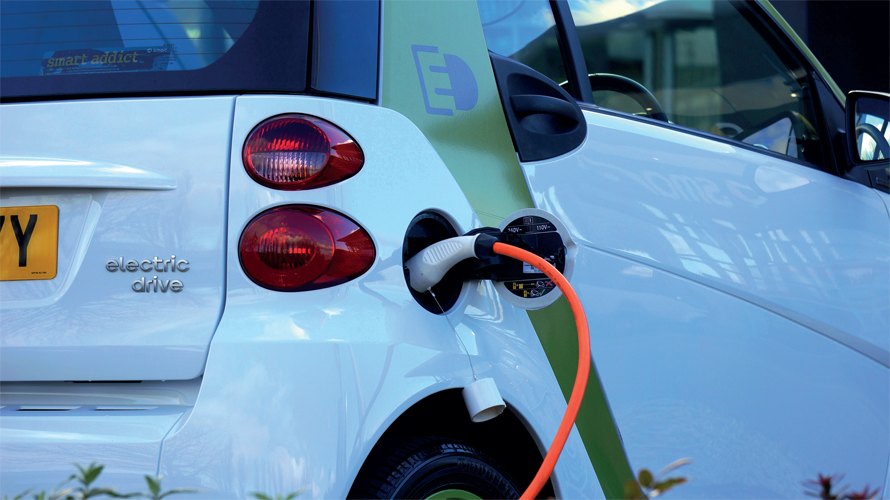
Charge it up
As a result of bringing forward the ban of selling new petrol, diesel or hybrid cars from 2040 to 2030, as part of the Government’s ‘Road to Zero Strategy,’ the pressure is on for the UK Government to meet its Electric Vehicle (EV) targets. Recent reports have found that in order to achieve such targets, electric vehicle chargepoints must be fitted five times faster than the current rate. But in order to achieve maximum and efficient use of EV chargepoints, it’s not just a case of simply installing more, but considering how they can be managed to overcome operational challenges created by increasing demand, and mitigate against misuse which arises from user behaviors.
In order to increase the efficiency of transport networks, particularly within the EV market, new operational models based on data will potentially unlock valuable insights into how EV chargepoint infrastructure is used, and how it can be significantly improved to meet demand.
Operational challenges
The operational challenges of EV chargepoint network infrastructure are not only related to the number of chargepoints available, but also how they are used. Solutions to the issues are becoming increasingly focused on two particular behaviors that interfere with the effective use of EV infrastructure – ‘ICEing’ and ‘hogging’. ICEing is where an internal combustion (IC) vehicle is parked within an EV bay, therefore, preventing it from being available for genuine EV users. Whereas hogging is where an EV vehicle is being used and charged in the bay, but the space is kept occupied for longer than it should, far surpassing the duration of the charging session and preventing other EV drivers from using the resource.
Recent surveys conducted by Comms365 suggest the general public is less concerned about ICEing and hogging than local councils. However, this may be because the public has not yet faced the potential scenarios that result as a consequence of such behaviors, such as having no available chargers. But these situations will only become more common once the usage and demand increases for electric vehicles each year up to when the IC vehicle ban comes into place in 2030. This is already adding enormous pressure on the government to not only encourage use of EV vehicles, but to make sure that the public 8charging infrastructure is in place to refuel vehicles as efficiently and easily as the current fuel station model.
Profiling usage and behaviors
To overcome these infrastructure challenges, local authorities and governments are looking at profiling what happens within the EV infrastructure, including monitoring the percentage of utilization and the time of the day it’s used. There are some interesting data points from existing research* that has been conducted which indicates a current low utilization of EV chargepoints. While we may not have yet reached peak EV demand, this may potentially mean that people aren’t aware of chargepoint locations – or they don’t know how to use them effectively.
While the functionality of EV chargers is increasing, arguably this is not as important as helping users to easily locate and use them. Users must be able to quickly navigate to their nearest chargepoint, and also identify whether any chargers are available – which is deemed as ‘essential’ by 81 percent of both EV-drivers and non-EV drivers in recent research* by Comms365 and Cenex. For example, there could be a sign outside a car park which states that all four chargers are busy, but one unit will be available in five minutes. This reflects the goal to create a similar environment to that of a petrol station, where drivers don’t mind sitting in a queue if they can see the pump ahead will shortly become free. Cultural mirroring must be considered for the use of EV, especially compared to what users of diesel and petrol vehicles are used to – there must be a matching of consumer experience between EV and IC vehicles to boost adoption. This is supported in the same research results, which found that 23 percent of non-EV drivers don’t want their refueling experience to change when switching to an EV.
In Scotland for example, the government is already attempting to deal with bay ‘hogging’ through implementing overstay charging fees, a form of enforcement that works by issuing fines if users stay too long by going beyond their charge session. However, some of these enforcement models are problematic in rural environments where there is less capacity for enforcement. In summary, there’s a significant cultural challenge of how to implement a fair system that people will not abuse. But how do you try to achieve the ‘filling station effect’ with public resources? What may work is a rapid charger system for users to ‘top up’ with enough miles for the rest of their journey, and then complete a full charge once they are home – which may be a more realistic prospect with the technology and deployments we have available today.
Data collection and analysis
No expansion and rollout of electric vehicle charging infrastructure can work effectively without data collection, analysis and sharing. It’s all well and good putting up ‘islands’ of chargers, but these cannot be managed properly without access to data that is shared with multiple stakeholders, including councils and users. Currently, data rests in silos, meaning the data is controlled by the chargepoint network operator (CPNO). There is now growing pressure from Central and Local Government to make chargepoint datasets available to be shared through industry standard protocols (OCPP and OCPI) to provide a fertile ground in which to grow new operational policies and allow the chargepoint network to operate more effectively. The gathering, sharing and analysis of this chargepoint data, together with IoT and other data sources, will identify trends, behaviors and challenges, streamline processes and make the most efficient use of information.
In fact, EV infrastructure may not work if stakeholders don’t collect, analyze and share their data effectively, contributing to a wider collaboration by integrating all the information together, such as traffic counts, signals and highways network operation. Pinch points and problems will appear, but with access to the right information, the data can help create answers to the problems. Once stakeholders and local councils collaborate and share their data with one another, a more holistic and clearer picture to users can be created New initiatives
Beyond access to EV chargepoints, what other needs will users have? What about the disabled driver? Recently, there have been new initiatives using Automatic Number Plate Recognition (ANPR) at EV chargepoints. Having access to the information about who the driver is opens up possibilities for implementing a network of disabled EV bays to direct the individual to. Note that the design of a disabled EV bay is not going to be the same as an ordinary EV bay; the charger will have a different design, and the individual will have certain needs to be met such as space around the charger to maneuver wheelchairs.
There is also the possibility of incentivizing EV further with dynamic charging plans where prices reflect electricity grid load and are dependent on the time of the day. If you’re charging at night on a public charger, should you pay less? And if it’s a peak period or location, should you pay more? The opportunities are endless – but only with the right data collected to provide meaningful insight.
Conclusion
It’s in all stakeholders’ interests to make EV infrastructure and the charging experience as streamlined, user friendly and efficient as possible. If it appears too difficult or challenging, then chargepoints will not be perceived to be available, and if users don’t know where chargepoints are, then people may not adopt EV en masse. However, by deploying technology solutions including IoT EV bay monitoring to help make these processes more efficient, with real-time data flow and sharing at the core of the proposition, then those involved can benefit from improved transport networks ahead and prepare for the inevitable increased demand that will occur.

Nick Sacke is head of IoT solutions at Comms365, an innovative Network Services company specializing in bespoke data connectivity, network services and IoT. It has gained a reputation for delivering an exceptional level of service and value-added solutions to the B2B market, from across its product portfolio; 4G, Bonded Internet, SD-WAN, IoT, ISP Services and Rental.
www.comms365.com
*For further information and access to this research, please contact Nick Sacke at nick.sacke@comms365.com